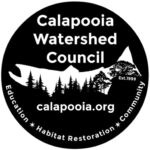Vegetation is a natural part of river ecosystems providing shade and cover; promoting bank stability; enhancing physical in-channel features; providing an input of woody debris; filtering sediment and serving as a source of nutrients to support fauna and flora. Management of vegetation in and alongside watercourses is currently undertaken for a range of purposes including agriculture, recreation and flood risk management. Where management is required to maintain the use of the channel, good practice vegetation management measures promote activities which support diversity of vegetation, allow natural regeneration and prevent the spread of non-native, invasive species. – Environment Agency Gov.UK
Oregon State University Extension Catalog: Weeds and Invasive Species – A comprehensive resource for publications relating to forestry for landowners from OSU.
The Rapid Revegetation Approach – Publication regarding the loss of native riparian, vegetation and dominance of invasive species in the Pacific Northwest. Peter Guillozet, Kendra Smith and Kathleen Guillozet.
Oregon State University Extension Catalog: Forest Health, Insects and Disease – Selection of publications regarding forest health.
Live staking guide from Sound Native Plants Certain species native to the Pacific Northwest will grow new plants from cut sections of branches planted into moist soil. We find that willows and black cottonwood generally have the highest success rates. Cuttings are relatively inexpensive and simple to install-under the right conditions, they are easy and economical to plant.
Pollinator guide from Xerces.org Pollinators in natural areas support diverse plant communities, wildlife food webs, and adjacent farms. Incorporating pollinator needs into a site management plan will result in excellent habitat for all wildlife of all types.
Reed canary grass guide from Invasive.org Reed canary grass is known for dense monocultures and is difficult to control. Herbicide application in late summer or early fall provides the most effective control especially for large populations. Cutting of reed canary grass is largely unsuccessful due to the rapid regrowth of the plant.
Native vs Invasive Species – A picture guide of native plants in the Pacific Northwest and their invasive imitators.
White Oak Restoration, BLM – Less than 1% of oak-dominated habitats are protected in parks or reserves. Private landowners hold the key to maintaining this important natural legacy.
A Practical Guide for Oak Release – by Constance A. Harrington and Warren D. Devine
Wetland Prairie Restoration Manual from Cascade Prairie Oak Partnership
Shade Tool – A tool for assisting municipalities in developing riparian shade inventories from Science Direct
United State Department of Agriculture (USDA)-Natural Resources Conservation Services Oregon – NRCS works with partners to develop local Conservation Implementation Strategies to help agricultural producers in those targeted areas implement conservation practices that address the resource concerns. Two current programs are being offered for landowners: Oak Habitat Restoration & Forest Resistance and Resilience. These programs offer technical and financial assistance to private landowners and operations interested in preserving natural resources on the land.
Share this:
- Click to share on Twitter (Opens in new window)
- Click to share on Facebook (Opens in new window)
- Click to share on Pinterest (Opens in new window)
- Click to share on Reddit (Opens in new window)
- Click to share on WhatsApp (Opens in new window)
- Click to print (Opens in new window)
- Click to email a link to a friend (Opens in new window)

